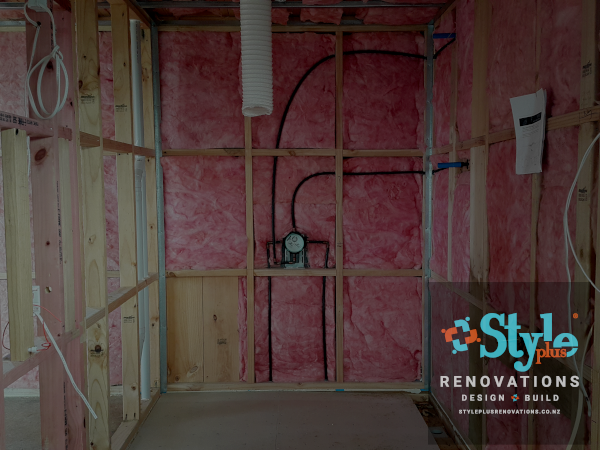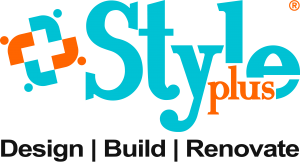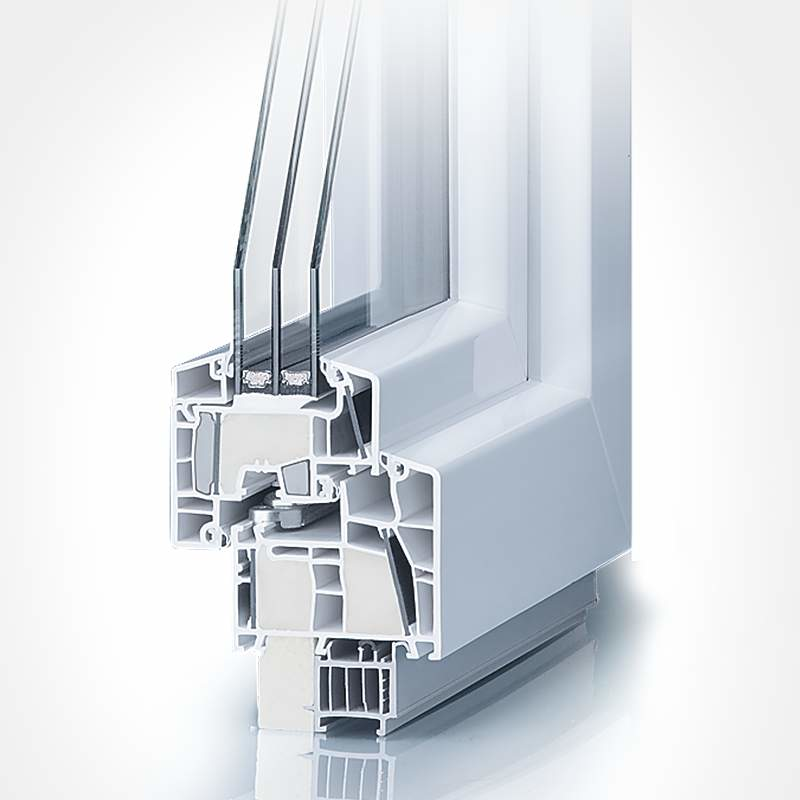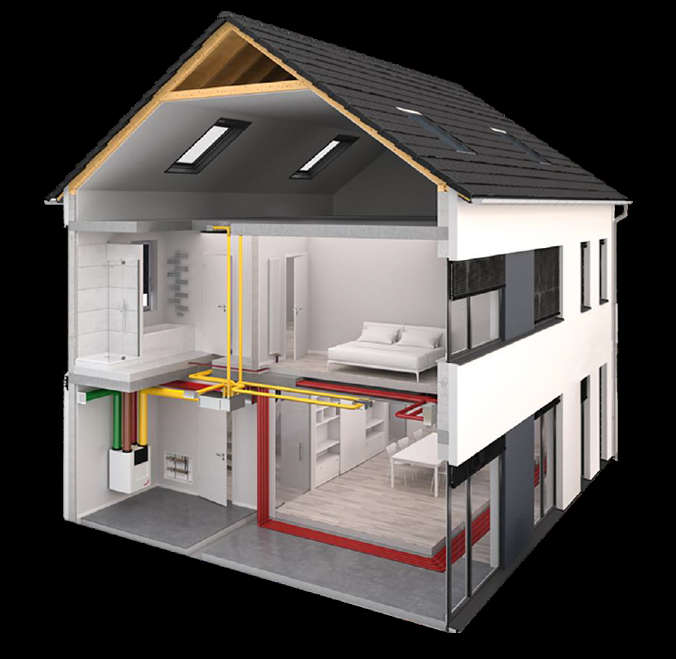Passive House Design
Passive house design, an innovative approach to sustainable building, is gaining momentum in New Zealand.
In a world grappling with environmental issues, the principles of passive house design offer a promising solution.
The team at Style Plus Renovations delves into the basics of passive house design and explores innovative approaches to create energy-efficient homes.
To view a short video of the passive house design basics video, click here.
A Passive House is an energy and health based standard in building design that is beneficial to the home owner and the environment.
Jan Antoni Glinkowski - Director - Style Plus Renovations
Table of Contents
The difference between passive design and sustainable design
SUSTAINABLE DESIGN
From the perspective of ecological sustainability, sustainable design in building refers to creating a built environment that complies with these principles. Essentially, the goal is to eliminate the adverse effects on the environment that a structure produces.
Read more about Sustainable Renovations here.
Both active and passive design can be a part of sustainable design. It is not limited to utilising what is naturally available while designing passively. It may also involve producing energy in an effort to actively increase sustainability. It can also examine additional aspects of design, like carefully selecting materials and energy saving.
PASSIVE HOUSE DESIGN
The ultimate in high-performance homes is the passive home.
The goal of passive house design goes beyond conventional construction. It revolves around principles ensuring maximum energy efficiency.
By optimising insulation, airtightness, and ventilation, these homes minimise energy consumption, creating a comfortable living space while reducing the carbon footprint.
To gain a passive house certification, you must meet a strict set of criteria, taking into account everything from site location to the products and construction methods used.
What are the Passive house design features?
In order to reduce the amount of energy needed for heating, cooling, and ventilation, passive house design makes use of a building’s site, orientation, climate, and other unique features. The main 5 features are:
INSULATION
Insulation functions as a barrier to heat flow, minimising heat gain in the summer to keep the house cool or minimising heat loss in the winter to keep the house warm.
AIRTIGHTNESS
Building materials used in airtight construction reduce heat loss and get rid of moisture and mould from the wall and roof components. Airtight construction goes a long way towards building a low-energy, high-performing, healthy house, especially when combined with a ventilation system.
HIGH-PERFORMANCE WINDOWS AND DOORS
A key feature of passive houses is the use of high-performance windows and doors. These elements not only enhance the aesthetic appeal but also play a crucial role in maintaining the desired indoor temperature.
VENTILATION SYSTEMS
Contrary to common misconceptions, passive houses are not airtight to the extent of compromising air quality. Ventilation systems are strategically integrated to ensure a constant flow of fresh air while preserving the energy-efficient nature of the structure.
THERMAL BRIDGING
Thermal bridges in construction arise from the presence of a physical material, gap, or component that penetrates the insulation and enhances its ability to conduct heat. The most common example would be an aluminium window frame.
Insulation
One of the main improvements to consider when thinking about passive house construction is the amount of insulation in your house. In addition to keeping your house warm in the winter, insulation also aids in keeping the summertime temperature in your home comfortable i.e. 18 – 25°C throughout the year in any given area of the building.
Its function as a heat-flow barrier lowers summertime heat uptake and wintertime heat loss. One of the main causes of heat loss in homes is air leakage and inadequate or badly built insulation.

An insulating product’s resistance to heat transmission, or R-Value, is a measure of its efficiency. Better thermal efficiency is represented by higher R values.
For example, a building built to the current building code i.e. timber framed house, where the gaps between the timber framing are insulated (fibreglass insulation), but the frames themselves are not. The gaps might be R2.0 with fibreglass insulation, but the frames might be only R0.8, and the whole wall is full of timber thus reducing the effective insulation.
It is important to have R-values that are consistently high across the whole surface and don’t contain areas that have much lower R-values. Also, without proper consideration for good design airtightness and ventilation, achieving high R-values can work against you.
Airtightness
Controlling airflow via the building’s external envelope is known as air-tightness. Passive houses work on the basis they are airtight. The airtightness ensures the heat remains in the house.
Air leaks don’t happen in an airtight structure at service entry points, doors, windows, plasterboard joints, ceiling or wall junctions, etc.
In addition to causing discomfort and thermal energy loss, leaks can lower indoor air quality. As a result, in order to make up for the losses, the heating system must run harder.
To optimise the efficiency and durability of thermal insulation and to guarantee significant lifetime savings, airtightness is a prerequisite for a passive house design.
For example, a new house built to the current NZ code will have an average of 4 to 10 air changes per hour (ac/hr). Whereas in a certified passive house, air tightness must achieve less than 0.6 ac/hr.

HIGH-PERFORMANCE WINDOWS AND DOORS
Singular-glazed windows and doors lose 10–35 percent of the heat they allow in.
To achieve optimum thermal performance and airtightness, windows’ size, design, and placement are crucial.
E2/AS1 cavity construction installation is the standard installation method as stipulated in the New Zealand Building Code.
Typical New Zealand joinery as per E2/AS1 cavity construction installation sits in line with the cladding meaning it’s fully exposed to the colder external temperatures. Whereas in Europe it is usually rebated closer to the internal side which improves thermal performance.
It is critical to select the best windows within your budget because they are the weakest point in the thermal envelope of your home.
Window options include Thermally Broken Aluminium, UPVC tilt and turn, and Passive House Certified window suites.
VENTILATION SYSTEMS
Whole house ventilation works on the basis of constantly changing the air in the house and using the thermal energy that is recovered to either warm or cool the incoming air according to the season.
Extract points are found in damp spaces like kitchens, bathrooms, and laundry rooms. Supply points can be found in rooms including living rooms, dining rooms, offices, and bedrooms.
Up to 95% of the energy from the extracted air is transferred by the heat exchanger to the entering fresh air.
Certified Passive Houses have a mechanical ventilation heat recovery (MVHR) system, such as the German Zehnder system.
The MVHR system is for indoor air quality control and not for heating or cooling buildings. It functions by extracting thermal energy from the inside air of the structure and utilising it to warm up outside air as it is brought inside.
Thermal Bridge Free Construction
When heat has a clear path to escape a building, for example around windows or at the intersection of two walls, thermal bridges can form.
Thermal bridges act as weak points in the thermal envelope, leading to considerable heat loss in winter and heat gain in summer
To make sure the intersections do not create needless heat loss pathways, careful design and construction details are vital. With infrared thermography cameras, thermal bridges can be found after construction, however, it is ideal to remove them during the passive house design phase.
PASSIVE DESIGN IN NEW AND EXISTING BUILDINGS
The best results come from applying passive house design principles to every step of the design and construction process, starting with site selection.
To maximise the advantages of passive house design and evaluate the effects of various design choices, simulation tools can be of vital assistance.
Once a new build is completed, some passive design features can be incorporated during later upgrades. For example, insulation can be improved in areas that are accessible, and it may be possible to alter the room layout to improve orientation and solar access.
For renovations, you may face certain limitations based on the existing structure, but many passive design features can still be integrated. For example, you can improve insulation (double layering insulation in ceilings and walls helps to eliminate thermal bridging), upgrade windows (double/triple glazed and joinery must be suitable to minimise transmission of heat), enhance airtightness, and install a (MVHR) ventilation system.
Working with a knowledgeable architect or designer experienced in passive house principles can help tailor these strategies to your specific new build or renovation project.
Moving Forward
Passive House Design in New Zealand represents an innovative and sustainable approach to construction. Focused on principles like insulation, airtightness, and high-performance elements, these designs aim to maximize energy efficiency and environmental benefits.
The benefits extend to significant cost savings, reduced environmental impact, lower energy use and improved health and comfort for homeowners.
Overcoming challenges such as cost considerations and adapting to local climates, passive house design is gaining popularity in various new home-build projects across the country.
Looking ahead, the future of passive house design in New Zealand appears promising, with evolving technologies and a growing commitment to environmentally conscious construction practices.

Evolution of The Passive House
Although the Passive House (also known as Passivhaus) Standard was first introduced in the 1970s, its current form dates much more recently. The first authentic example of Passive House architecture is a block of four townhouses in Darmstadt, Germany. This modest building, which was finished in 1991 for private owners is recognised as the first to achieve the necessary efficiency standards.
Darmstadt swiftly rose to prominence as the birthplace of Passive House architecture, with the establishment of the Passivhaus-Institute there in 1996. The Institute, which was first established to oversee the Standard, has been instrumental in advancing the Passive House methodology. As a result, specialised parts were created to satisfy the Standard’s specifications, most notably windows and ventilation systems.
Even though the majority of Passive House developments were first found in Germany and Austria, the movement has now expanded throughout the world. New Zealand is included in this.
PASSIVE HOUSE DESIGN FAQS
- What is passive heating?Good design and efficient insulation work together to capture and store solar energy, which will heat your home day and night for the majority of the year.
- Are passive houses more expensive to build?Constructing a passive house may have a higher upfront cost, but the long-term savings on energy bills often outweigh the initial investment.
- What role do windows play in passive house design?Windows are carefully designed to optimise natural light and insulation, key elements in achieving the goals of passive house design.
- Are passive houses only for new constructions?While ideally suited for new builds, passive design principles can be applied to retrofit existing homes, improving their efficiency.
- Can existing homes be retrofitted to meet passive house standards?Retrofitting existing homes is possible, but it requires careful planning and may involve substantial renovations to meet passive house criteria.
- Are passive houses only suitable for certain climates?While passive house principles are adaptable, they are particularly effective in regions with varied climates, like New Zealand, where they contribute to year-round comfort and energy efficiency.
- What makes passive house design unique in New Zealand?Passive house design in New Zealand incorporates elements tailored to the local climate, ensuring optimal energy efficiency and comfort.
- How does passive house design contribute to reducing carbon emissions?By minimizing energy consumption, passive houses significantly reduce reliance on traditional energy sources, thereby lowering carbon emissions.
At Style Plus Renovations, we understand that a custom home renovation or new cuustom home build can be long and involved, but with the right design & build builder, it can become a rewarding and enjoyable experience. At Style Plus Renovations, we prioritise listening to your goals and placing your needs at the forefront.
Whether you have specific design preferences, or unique requirements, or simply want to explore the possibilities of building a custom renovation or new custom passive home build, we are here to guide you. Our goal is to create a home that reflects your individual style, meets your functional needs, provides a space where you can thrive, and achieve your passive home build goals.
Please don’t hesitate to reach out to us. We look forward to hearing from you and discussing how we can bring your dream home to reality.
Whilst all information is considered to be true and correct at the date of publication, changes in circumstances after the time of publication may impact the accuracy of the information.
The information may change without notice and Style Plus Renovations is not in any way liable for the accuracy of any information printed and stored or in any way interpreted and used by a user.
Get started with a Free
Architects Renovation Feasibility Report
LET'S START
YOUR RENOVATION PROJECT
Tel us about your renovation project and we’ll call you back for a no-obligation chat about your ideas.
Alternatively, if you prefer, we can initially set up a meeting using Microsoft Teams or Zoom (and other meeting apps) for a no-obligation chat about your ideas.
We look forward to hearing from you to discuss your project and get you started on your renovation journey.
If you would like to know more about our renovation process, check it out here.



